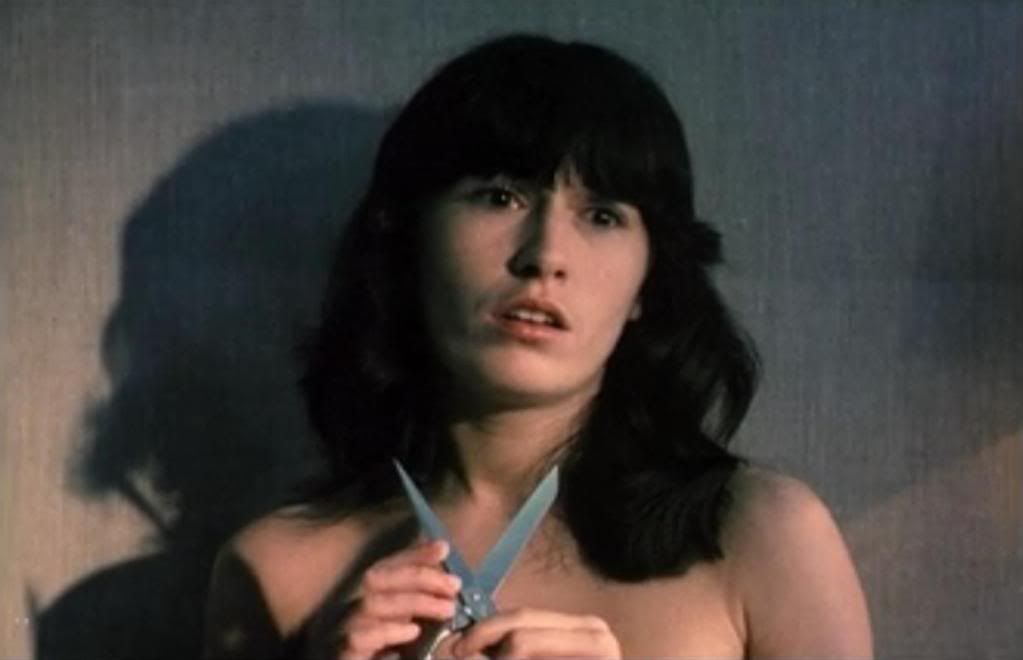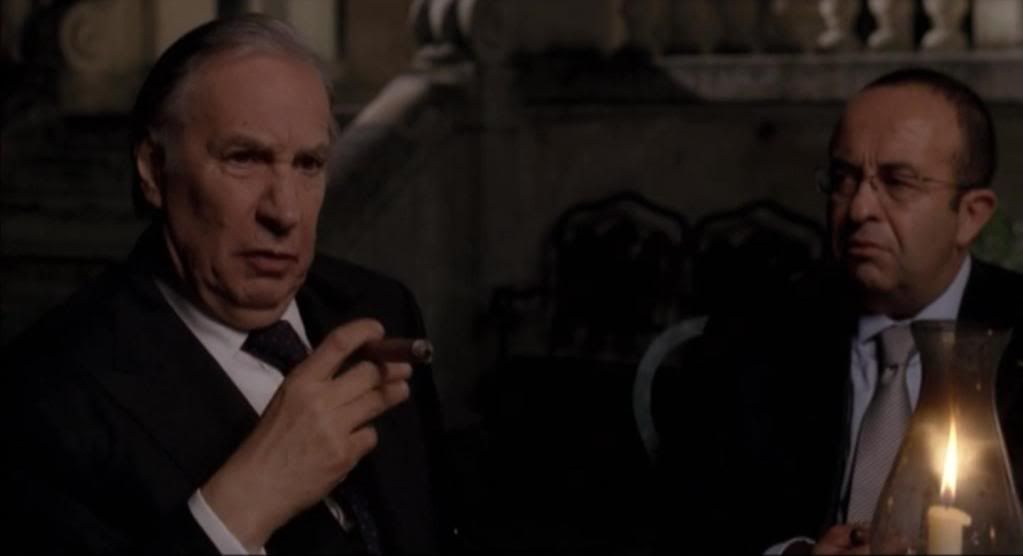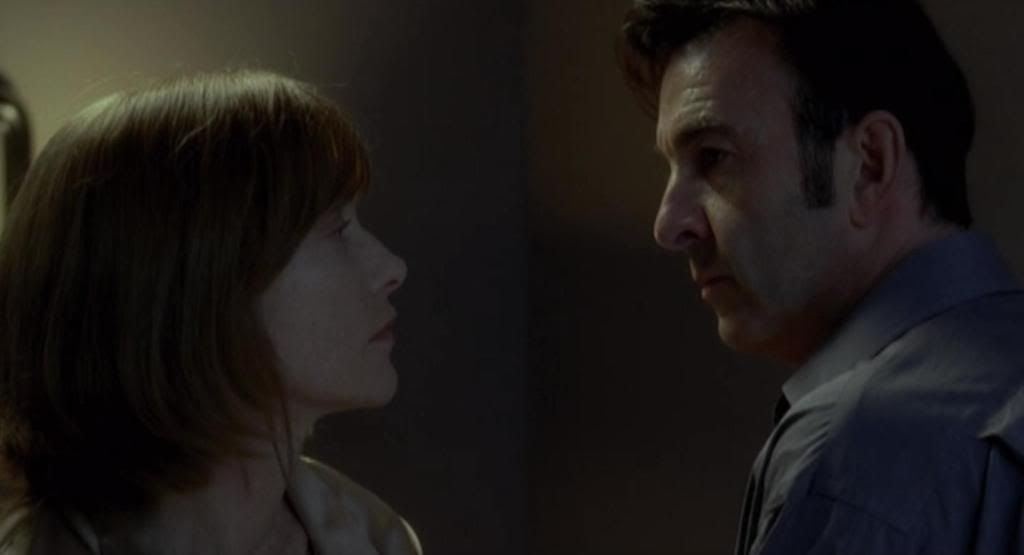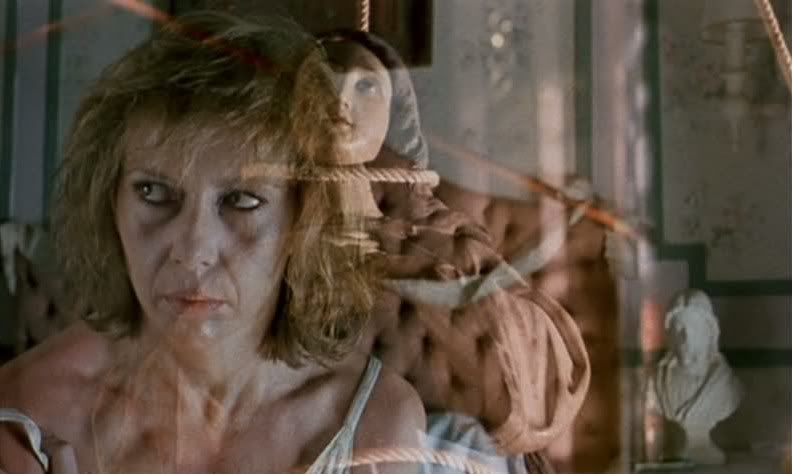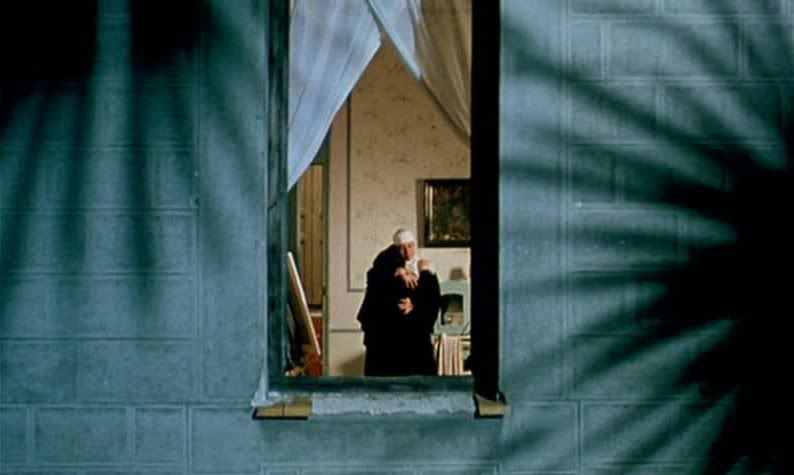

The Golem is one of the classics of German expressionist horror. Released the same year as The Cabinet of Dr. Caligari, it's neither as famous nor as great as that genre-defining landmark, but it's still an interesting film with a striking visual style. Directed by Carl Boese and Paul Wegener, and shot by the always fantastic Karl Freund, The Golem has a moody gothic style and some rudimentary but nonetheless creepy special effects. The film's sets aren't as stylized or twisted as the famously angular designs for Caligari, but this tale of a Jewish rabbi creating a monstrous servant made of clay takes place in a Polish ghetto the design of which is balanced neatly between realism and expressionism. The sets seem more solid and historically grounded than in Caligari, but there are still unmotivated, spiky shadows stretched across the walls and angular design flourishes everywhere. In one of the most compelling flourishes, the centerpiece of the rabbi's home is a twisting spiral staircase that looks oddly like the fleshy folds of a human ear.
The story, derived from Jewish mysticism, is familiar: a venerable rabbi (Albert Steinrück) conjures a Golem (Wegener), a man shaped out of clay who comes to life to serve as a stoical servant and protector of the ghetto. Obviously, any pre-World War II German film dealing with Jewish religion and ethnicity is going to be automatically interesting for reasons having little to do with the film, and this one is especially fascinating in its contradictions. It is ostensibly a story that portrays the mistreatment of Jews sympathetically, though the film's message is ultimately more tangled than that. Towards the beginning of the film, the Jews in the ghetto receive a chilling edict from the emperor that orders them to evacuate, that they are being kicked out of their homes, a reflection of the pogroms and abuses endured by the Jewish people in Europe even before the Nazis came to power. This is a reflection of the historical roots of Nazism in deeply engrained anti-Semitism, and yet the film itself doesn't avoid these stereotypes and prejudices, either.
Notably, the emperor's edict lists among the Jews' crimes participating in "the black arts," and indeed the film itself passes that stereotype along rather than denying it. True, the story of the Golem is rooted in Jewish mysticism, but the film presents the Jewish elders as a cross between wizards and mad scientists, participating in the dark arts and summoning demons to do their bidding. In one of the creepiest scenes, the rabbi performs a ritual — later echoed by F.W. Murnau in Faust — to summon a demon, who appears as a disembodied head floating in the darkness, smoke pouring from his gaping maw. The Jewish temple is rendered as a place of mysticism where the worshippers ritually bow and sway while the rabbi, dramatically posed in front of a row of gleaming candles, exhorts them from above. The film's presentation of Judaism is unavoidably tangled in myth, empathizing with the ghettoization and punishment of Jews while also revelling in familiar stereotypes and libels about demon worship and dark magic.


That contradictory subtext aside, the film is mostly compelling but tonally imbalanced. The true creepy horror moments are few, and for most of the film the Golem is less a threatening monster than a curiously practical servant who's used to fetch groceries and fetch wood, scenes that are played for deadpan humor as much as anything. There's also a wan subplot with the rabbi's daughter Miriam (Lyda Salmonova) being wooed by the non-Jewish knight Florian (Lothar Müthel), a romance that's surprising in its sexual frankness — Florian places his hand on Miriam's breast and at one point wakes up by her bedside, both of them half-dressed — but otherwise serves simply to set up an expected tragic conclusion.
Not surprisingly, the most memorable scenes are those in which the film's expressionist horror gets free rein. Wegener's lumbering Golem was an obvious visual reference point for James Whale's Frankenstein, with his bulky, awkward form and the sentimental emotionality lurking beneath the monster's horrific visage. For a man made of clay, Wegener's Golem is very expressive, even hammy, always glancing around with an ironically arched eyebrow, gritting his teeth and widening his eyes to convey anger, his mouth horribly twisted into a hybrid of a grimace and a grin. He's undone, ultimately, by his sentimentality: like Frankenstein's monster after him, he's capable of love and warm feelings, and when he's moved by the sight of a little girl, she's able to innocently, playfully remove the amulet that gives him life.
The Golem, with its plodding pace and contradictory ideas about its Jewish subject, hasn't dated as well as some of its more famous contemporaries from the German silent era. But it's still a fascinating, visually striking film that, like Caligari, was a major influence on the horror films that would follow it.

